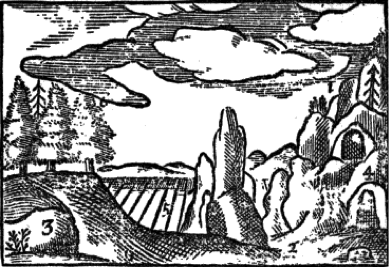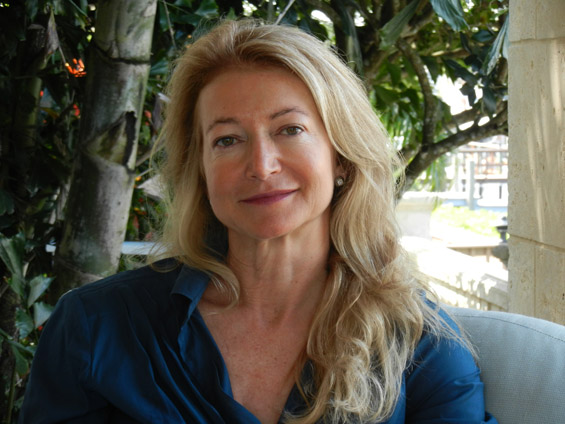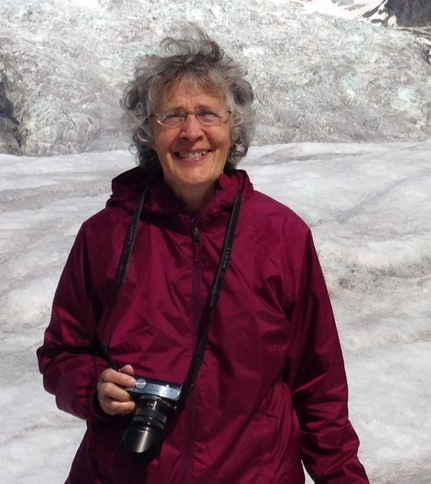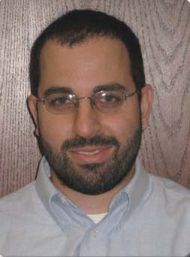
LLED464:
Lesson 02: Nonfiction as Literature: Part One
Lesson 2 Overview | Nonfiction as Literature: Part One
- “Certainly the basic purpose of nonfiction is to inform, to instruct, hopefully to enlighten. But that’s not enough. An effective nonfiction book must animate its subject, infuse it with life. It must create a vivid and believable world that the reader will enter willingly and leave only with reluctance. A good nonfiction book should be a pleasure to read."
— Russell Freedman, quoted in Barbara Kiefer and Melissa Wilson’s “Nonfiction Literature for Children: Old Assumptions and New Directions,” 291
In this lesson, we’ll begin exploring nonfiction as literature, with the opening quote from Russell Freedman as our foundation. Freedman’s words initially appeared in his essay “Fact or Fiction?” published in Using Nonfiction Trade Books in the Elementary Classroom: From Ants to Zeppelins, edited by Evelyn Freeman and Diane Person. Barbara Kiefer and Melissa Wilson quote him in their chapter “Nonfiction Literature for Children: Old Assumptions and New Directions” that we’ll be discussing for this lesson.
Freedman, known for his passionate curiosity and extensive research in writing nonfiction for young people, emphasizes the importance of story and literary qualities in nonfiction. He brings attention to the power of nonfiction to engage readers while providing informative and enjoyable reading experiences.
In the readings for this lesson, you’ll learn about different categories of nonfiction, and complexities around definitions for nonfiction and informational texts. We’ll explore resources for locating nonfiction literature for children and adolescents, and ideas for evaluating nonfiction literature.
Lesson Objectives
At the end of this lesson, you should be able to:
- Develop and demonstrate an understanding about the complexities of defining “nonfiction” and “informational” books.
- Recognize nonfiction as literature and articulate purposes of nonfiction.
- Be familiar with resources for locating nonfiction literature.
- Identify and discuss characteristics of “good” or “effective” nonfiction.
Lesson Readings & Activities
By the end of this lesson, make sure you have completed the readings and activities found in the Lesson 2 Course Schedule.
References:
Freedman, Russell. “Fact or Fiction?” Using Nonfiction Trade Books in the Elementary Classroom: From Ants to Zeppelins. Eds. Evenlyn Freeman & Diane Person. Urbana, Illinois: National Council of Teachers of English, 1992. 2-10.
Kiefer, Barbara and Melissa I. Wilson. “Nonfiction Literature for Children: Old Assumptions and New Directions.” In Handbook of Research on Children’s and Young Adult Literature. Eds. Shelby A. Wolf, Karen Coats, Patricia Enciso, and Christine A. Jenkins. New York: Routledge, 2011. 290-299.
What is Nonfiction?
As a starting point, let’s consider the traditional division of fiction (imaginative and entertaining) and nonfiction or non-fiction (factual and informative). With this traditional bifurcation, nonfiction is understood in terms of not being fiction, and it invites connotations (not entertaining, dry) that do not represent the rich literary and aesthetic experiences available through reading nonfiction. As we can see in Freedman’s words, “good” nonfiction is so engaging that it draws a reader into the real-world experiences it portrays.
Sometimes the terms “nonfiction” and “informational” are considered equivalent, but nonfiction can be considered more of an umbrella term that includes informational texts. We have selected the phrase “Nonfiction Literature” for the title of this course to represent the broader term “nonfiction” that includes nonfiction narrative, biographies, autobiographies, and memoirs, as well as informational texts.
For those of you interested in the Common Core State Standards (CCSS), “informational text” is the primary category, and there are four types identified: literary nonfiction, expository texts, argument or persuasion texts, and procedural texts. For further reading, Booklist Online has a “Classroom Connections: Informational Texts and the Common Core” essay by Terrell A. Young and Barbara A. Ward that provides descriptions of each type of informational text as defined by the CCSS.
It is not always a clear division between nonfiction and other kinds of literature. For example, some nonfiction books for young readers are also picturebooks with poetry, blending nonfiction text with the visual art of illustrations or photography and the verbal art of poetry. Later in the course, we’ll explore hybrid texts. We’ll also consider creative nonfiction, which is sometimes referred to as narrative nonfiction or literary nonfiction.
Next, let’s take a look at some basic go-to resources for locating nonfiction literature for children and adolescents.
Nonfiction Beginnings and Resources

Considered to be the first children’s picturebook, Orbis Pictus is a work of nonfiction. Its author, John Amos Comenius (Jan Amos Komensky) | (1592 to 1670), was a Czech theologian, educator, and writer. Orbis Pictus, or Orbis Sensualium Pictus—translated as Visible World in Pictures, World Around Us in Pictures, or World of Things Obvious to the Senses Drawn in Pictures—was originally published in 1658 (or 1657 according to some sources), first in Latin and German, and later in English.
As a result of the Project Gutenberg, you can access as an eBook, the entire book of The Orbis Pictus (1887 edition) by John Amos Comenius, translated by Charles Hoole.
To learn more about Orbis Pictus and see images from different versions, you can visit Orbis Sensualium Pictus webpages on the University of Minnesota’s “Explore Education Iconics” website.
Orbis Pictus is the namesake for the National Council of Teachers of English (NCTE) Orbis Pictus Award for Outstanding Nonfiction for Children. This award started in 1989, and titles winning this award represent a variety of content areas. In addition to each year’s winner and honor books, the committee names recommended books, as well.
Reference
Comenius, John Amos. The Orbis Pictus. Ed. Charles William Bardeen. Trans. Charles Hoole. Syracuse, NY: C.W. Bardeen, Publisher, 1887. Project Gutenberg: Release Date: March 9, 2009 [EBook #28299].
More Resources
Mathical: Books for Kids from Tots to Teens
This collaboration between the Mathematical Sciences Research Institute (MSRI) and the Children’s Book Council that started in 2015. The prize winner and honor books categories are geared toward grade levels (Pre-K, Grades K-2, Grades 3-5, Grades 6-8, and Grades 9-12). They include fiction and nonfiction titles, so even though it is not immediately clear if a book is nonfiction, the math-themed books could be of interest. As Director of MSRI David Eisenbud states in the news release announcing the inaugural winners:
“Math is about logic and patterns and it gives us tools to understand our world. Literature can be a powerful tool in helping children connect mathematical principles to their own lives.”
Notable Social Studies Trade Books for Young People
This is an annotated bibliographic resource for books selected by social studies educators. The project is a joint effort of the National Council for Social Studies (NCSS) and the Children’s Book Council (CBC). The list is also published in the May/June issue of Social Education.
Outstanding Science Trade Books for Students K-12
This is an annotated bibliographic resource for books selected by science educators. The project is a joint effort of the National Science Teacher’s Association (NSTA) and the Children’s Book Council (CBC). The list is also published in the March issue of Science and Children.
School Library Journal, Best Books—Nonfiction
The School Library Journal (SLJ) Best Books lists (Picture Books, Middle Grade, Young Adult, Nonfiction) are selections made for a given year by the review editors. The list for 2014, for example, includes Jacqueline Woodson’s Brown Girl Dreaming.


